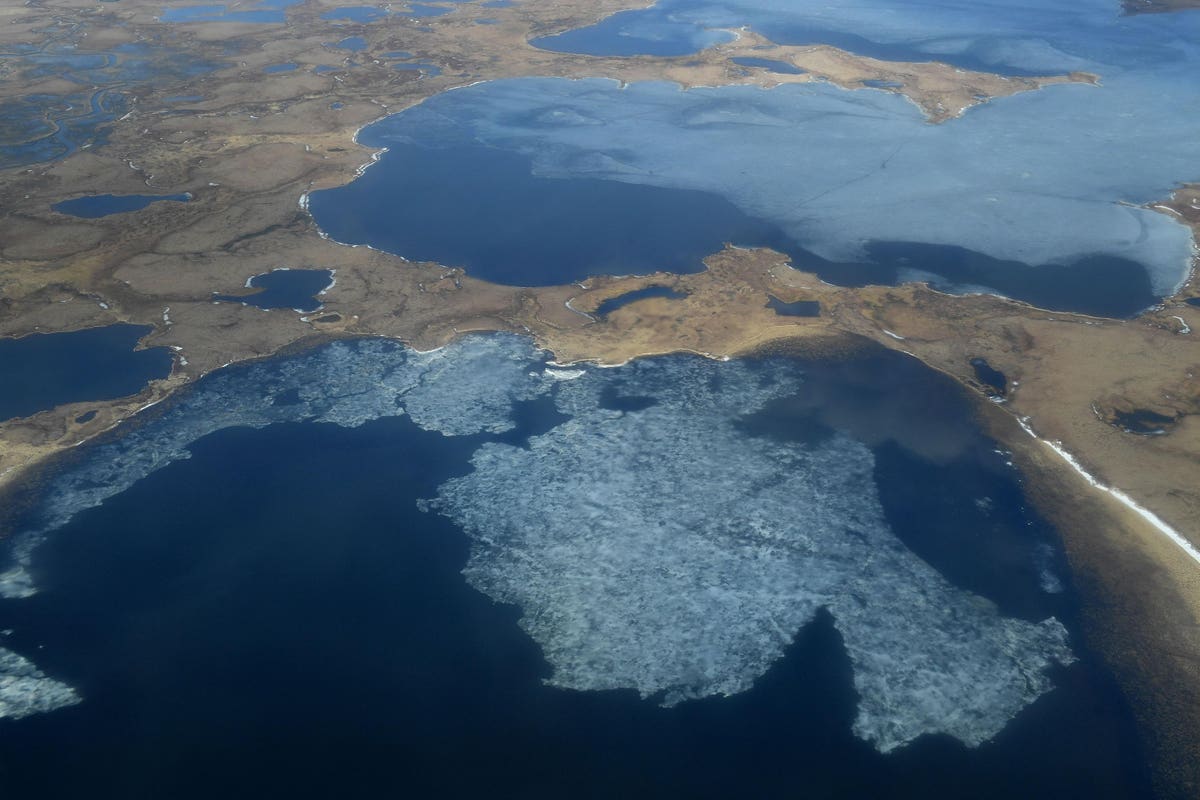2023 is defined by a string of depressing climate records. Wildfires in Malibu, a strong El Niño that may last through the winter, and many more showcase the perilous state of the climate. Amongst these record highs, it’s not surprising that one of the world’s most unstable environmental resources is literally melting: permafrost. Permafrost is the permanently frozen soil found at extreme northern latitudes. It covers 24% of the northern hemisphere’s landmass and contains nearly half of all organic carbon in the Earth’s soil. Its degradation represents a ticking time bomb, with scientists warning a mass melting of permafrost is one of the deadliest but least discussed problems facing humanity.
The environmental effects of permafrost melting make one shudder. It would create a vicious feedback loop, forcing itself to melt faster. It would introduce huge quantities of freshwater into ecosystems, destroying them, raising sea levels, displacing millions, and potentially awakening currently dormant organisms (scientists recently successfully awakened a 46,000-year-old microorganism from permafrost). Melting permafrost may destroy the foundations of energy-based prosperity in, Canada, Greenland, Norway, Alaska, and Russia.
It would also erode the physical stability of the energy sector in northern latitudes. Melting permafrost has already triggered giant sinkholes, slumping phone lines, damaged highways and airport runways, and industrial pollution from melting containment wells. In May 2020, melting permafrost resulted in a Siberian diesel-waste spill of 20,000 metric tons, contaminating an area the size of Philadelphia.
Melting permafrost would literally sink much of the world’s energy prospects. Most engineering designs use 30 years of climate data to estimate infrastructure impacts, with a service life of the same duration. As temperatures climb, past estimates become increasingly obsolete.
Between 1949 and 2011, environmental changes and oilfield infrastructure in northern Alaska led to surface water pooling and rapid degradation of permafrost. These effects have accelerated in the past two decades, which can be attributed to the hotter temperatures. An analysis was conducted recently to assess the potential consequences of projected warmer and wetter conditions on public infrastructure. Permafrost thaw was projected to cost $1.6-2.1 billion in cumulative damages from 2015-2099 in Alaska alone, an area of permafrost that is relatively well monitored and protected by wildlife refuges.
Despite the dangers, building in the Arctic not only persists but accelerates. Coastal infrastructure on the Arctic Ocean has increased by 15% since 2000. The human presence and activity is increasing the warming of the permafrost.
55% of the identified human impacted area will be shifting to above 0 ◦C ground temperature at two meter depth by 2050 if current permafrost warming trends continue at the pace of the last two decades, highlighting the critical importance of better understanding how much and where Arctic infrastructure may become threatened by permafrost thaw.
From satellite imagery, it is estimated that at least 120,000 buildings, 40,000 km (24,850 miles) of roads, and 9,500 km (5,900 miles) of pipelines could be at risk, highlighting threats to some Canadian highways, the Trans-Alaska Pipeline System, and the Russian cities of Vorkuta, Yakutsk, and Norilsk (all of which are significant producers of raw materials). Melting permafrost will increase the maintenance costs for critical infrastructure by $15.5 billion by mid-century but unable to prevent some $21.6 billion in damages. Nearly 70% of current infrastructure located on permafrost is at risk, including major oil and gas fields, pipelines, and mines.
The major immediate loser in any permafrost melting scenario is Russia. Before permafrost melting was widely understood, the scholarly and popular view was that Russia would be the “winner” in global climate change as higher temperatures would make Siberia economically viable. Russia is expected to have the highest burden of costs from melting permafrost, ranging from $115 billion to $169 billion. This may be enough to compel the Kremlin to recognize that their plans to “use the advantages of climate change” may be poorly conceived. Nevertheless, Russia shows no signs in abandoning its abysmal environmental policy and engage in responsible development of the Arctic like other Arctic Powers have.
Implementing monitoring systems to track permafrost conditions, including temperature changes, ground movement, and permafrost thickness, is necessary. China is currently leading the way with an innovative set of permafrost-tracking strategies employed by researchers studying permafrost in China’s Qinghai-Tibet Plateau. The ultimate aim of the research was to build a highway through the permafrost which would not melt it. Thus far, they have succeeded by employing cooling engineering measures such as shading boards, thermosyphons, and air-cooled and crushed rock embankments.
We also need a robust monitoring system to track permafrost conditions in and around oil infrastructure. Regular monitoring can detect early signs of thawing and provide valuable data for adaptation strategies. Satellite missions, like the European Space Agency’s Copernicus Hyperspectral Imaging Mission, will map changes in land cover and help monitor soil properties and water quality, pinpointing emissions hotspots in permafrost regions.
Similarly, NASA’s Surface Biology and Geology mission will use satellite-based imaging spectroscopy to collect data on various topics relating to permafrost, such as plant health and changes to land through studying landslides and volcanic eruptions.
Resolving the permafrost problems is vital. As the permafrost is a collective good, its maintenance is in most actors’ interest and whose degradation is apparent. Melting soil and collapsing buildings are more tangible than CO2 in the atmosphere, and its melting will create hundreds of billions of dollars in immediate economic damage to many, including oil and gas companies. Ironically, environmentalists may want to appeal to oil companies’ long-term self-interest to save permafrost.
Read the full article here





